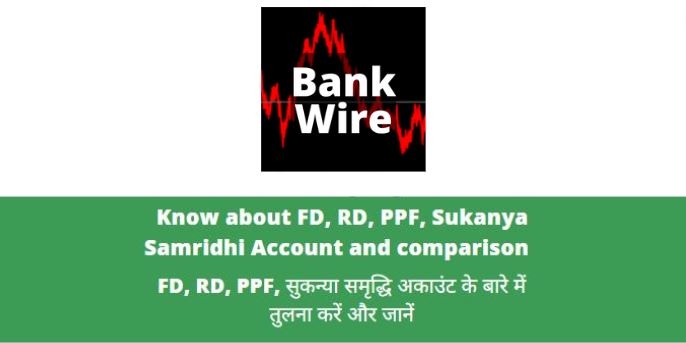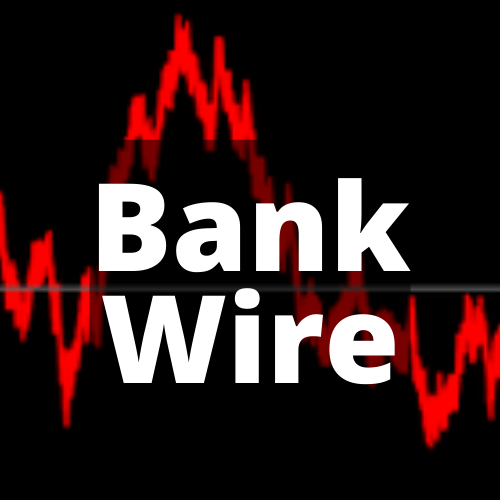
Compare Bank Deposit Schemes
Comparison of PPF, Sukanya Yojana, Recurring Deposit, Fixed Deposit
Bank Deposit Schemes: To achieve our long term and short term goals, we plan savings. Savings can be done in many ways, some of which are facilitated by Bank Deposit Schemes and provide you security to your savings along with good returns. Some of them are very popular and some are less known to common people. These are fixed deposits, recurring deposits, Public Provident Fund, Sukanya Samriddhi Yojana. You should choose any of the above means of saving according to your future needs, which can be marriage of daughter, creating funds for higher studies of children, buying a house, buying a car even for purchasing anything in a short term period.
What is Fixed Deposit, How does it work? Benefits of Fixed Deposits?, Are Fixed Deposits and interest earned Tax Free? What are the disadvantages of Fixed Deposits? (Bank Deposit Schemes)
A fixed deposit (FD) is a financial instrument provided by banks or Non Banking Financial Company (NBFC) which provides investors a higher rate of interest than a regular savings account, until the given maturity date. You have to invest a lump sum one time and you will get the amount after maturity with interest fixed while creating the FD. However you can break it anytime by paying a penalty (reducing of interest) and getting the funds.
Cash deposit limit in savings account for individual
Types of Insurance, Why to choose banks for insurance
Generally the interest rate on FD increases with the term of the FD. You can create a FD for 1 week to 10 years of period whichever suits you. The FD are basically three types
- FD which matures after term.
- FD which reinvests principal amount automatically and create new FD as per the interest rate and credit the interest amount to your saving account.
- FD which reinvests principal and interest amount after maturity.
Some banks and NBFCs are providing facilities to get interest amounts during the term of the FD. By reinvesting principal and interest amount, you can avail benefit of compounding and create a good corpus.
Some of the major benefits of FDs are
- Customers can avail loans against FDs up to 80 to 90 percent of the value of deposits at very low interest rate (generally 1 or 2% over the rate offered on the deposit).
- Higher interest rate than depositing money in a savings account.
- Tax saving fixed deposits allow the investor to save tax under Section 80C of the Income Tax Act.
- Easy to create and break in need (most of the banks offer this facility online even through mobile banking)
15 Tips and Tricks to save income Tax
Cyber Fraud: Type of banking fraud, Recover lost money
Taxability:
From April 2019 onwards, if the interest on FD is more than ₹40,000, then PAN users would be liable to pay 10% as tax and non-PAN users would pay 20% tax on interest earned. This interest would be deducted as TDS (tax deducted at source) at the time of credit of annual interest. This is applicable to both interest payable or reinvested per customer.
Banks issue Form 16 A every quarter to the customer, as a receipt for Tax Deducted at Source. If the total income for a year does not fall within the overall taxable limits, customers can submit a Form 15 G (below 60 years of age) or Form 15 H (above 60 years of age) to the bank when starting the FD and at the start of every financial year to avoid TDS.
Disadvantages:
There are some factors/ features which makes it little less popular among investors, which are as under –
- Interest are Taxed Upon All interest gained on the fixed deposits are fully taxed upon
- TDS Taxation Interests gained from a FD are also charged with TDS. Banks reduce it from the interest accrued at the end of each year. However, the depositor has the option to opt out of TDS, and pay all the interest at the maturity. The form 26 AS, is linked to the PAN card of the depositor and shows all the TDS deductions made towards the FD.
- Lower Interest Rate Sometimes the inflation rate may be even higher than the interest rate of the FD.
- No flexibility to funds If you withdraw your money from a fixed deposit account before the agreed maturity date, you will likely be penalized in the form of reduced interest or penalty fees.
National Stock Exchange of India (NSE), Stocks listed on Nifty
6 things you Must know before market opens
What is Recurring Deposit?, What are the benefits of Recurring Deposits?, Are Recurring Deposits and interest earned Tax Free?, What are the disadvantages of Recurring Deposits?
A Recurring Deposit (RD) is a term-deposit, offered by Indian Banks and NBFCs. It is an investment tool which allows people to make regular deposits and earn decent returns on the investment. Customers have the opportunity to build up their savings through regular monthly deposits of a fixed sum over a fixed period of time. The minimum period of a recurring deposit is six months and the maximum is ten years. You will get the total funds along with interest after maturity. Like FDs, RDs also can be liquidated before maturity by paying a penalty (reducing interest). Generally this is created for short term plans.
Benefits of RD
- High-interest rate than a normal savings account.
- No penalty if you miss an installment.
- Start with a minimum Rs. 500/- month.
- Save for as low as 6 months.
- Best for short-term goals.
- Save bit by bit.
- Can also be opened and liquidated online.
Financial Planning for your child’s Education
Read this before buying a term insurance
Tax rules for RD are same as FD, as you have to pay TDS on the interest earned. You can refer to the details above in this article.
Disadvantages of RD:
- You cannot withdraw the money anytime you wish.
- You cannot change the amount you like to invest monthly once decided.
- It has a comparatively lower rate of interest.
- TDS applicable on return.
Comparison of Bank Deposit Schemes, Difference between Sukanya Samriddhi vs Bank FD vs RD vs PPF
Every time you decide to invest in bank Fixed Deposits (FD), Recurring deposits (RD), Sukanya Samriddhi Yojana (SSY), Public Provident Fund (PPF), you must think how long it would take to grow your money. We will see comparison of Bank Deposit Schemes in several ways below-
1. Double your money faster:
- Currently, Bank FDs and RDs are offering around 5.5% interest to investors. Going by this rate, it will take over 13 years for your money to double,
- PPF interest rate is 7.1% p.a. at the moment. If the PPF interest rate remains unchanged, it will take around 10 years for your money to double.
- Sukanya Samriddhi Yojana interest rate at the moment is 7.6%. If the interest rate remains unchanged, it will take over 9 years for your money to double.
2. Taxation:
- Investments made in the Sukanya Samriddhi Yojana are eligible for deductions under Section 80C, subject to a maximum cap of Rs 1.5 lakh. The interest is also exempt from tax. The proceeds received upon maturity/withdrawal are also exempt from income tax.
- You don’t have to pay any taxes on interest income earned from Public Provident Fund as it is totally exempt. The EEE arrangement applies to PPF. As a result, the deposit, the interest received, and the amount withdrawn are all free of tax liability.
- Interest earned on an FD and RD is taxable and taxes according to the IT Act’s for the financial year are applicable. Moreover, when interest income on FD reaches Rs 40,000 (Rs 50,000 for senior citizens) in a financial year, banks deduct tax at source (TDS). Banks charge 10 percent tax on earnings over Rs 40,000, which is deducted at the source.
3. Mode of operation/ regulation:
- FD and RDs are managed/ regulated by banks and NBFCs as per the rules and regulation of RBI, hence each bank and NBFC is rendering a different rate of interest.
- PPF and SSY are managed by the government of India, hence there is the same interest rate provided wherever you open the PPF or SSY account.
4. Liquidation/ Part withdrawal of Money:
- In case of RD and FD, you have full control on your funds and can withdraw money entirely whenever you want to, whereas there are some restrictions in PPF and SSY.
5. Loan Facility:
- Generally there is no loan provided against RDs
- You can avail up to 90% of the deposit amount in case of FD.
- In the case of PPF and SSY only after the 3rd financial year you can avail a loan against the scheme.
6. Tenure and opening conditions:
- You can open an RD for 6 months and by Residents, HUFs, Trust, Corporation Firms, etc. including NRIs.
- Also, you can open FDs for 7 days by Residents, HUFs, Trust, Corporation Firms, etc. including NRIs
- PPF and SSY can be opened by Residents only for a fixed period.
Conclusion
To conclude, Bank Deposit Schemes like FD, RD and PPF, SSY are good options for risk-averse investors. Generally, people who are looking to save taxes along with investing for the future prefer PPF/ SSY. Due to the government backing, the security it provides is unmatched. Also, the fact that the interest you earn is also tax-free adds to its attractiveness However, it comes with an extremely long lock-in with limited withdrawal options, that too from the 7th year.
FDs on the other hand are comparatively more liquid and give you flexibility of deciding the tenure. The tax-saving FDs have a lock-in of 5 years, which is much lesser than PPF.
Read article on Public Provident Fund opt to Save Tax, best tool
Important Links
Read Category-wise posts
Banking | Bank Account | Bank Deposit Schemes | Loans | Bank Cards | Credit Cards | Debit Cards | Search IFSC & MCLR Code | Insurance | Bank Jobs and Exams | Stock Market | GST | EMI Calculator




